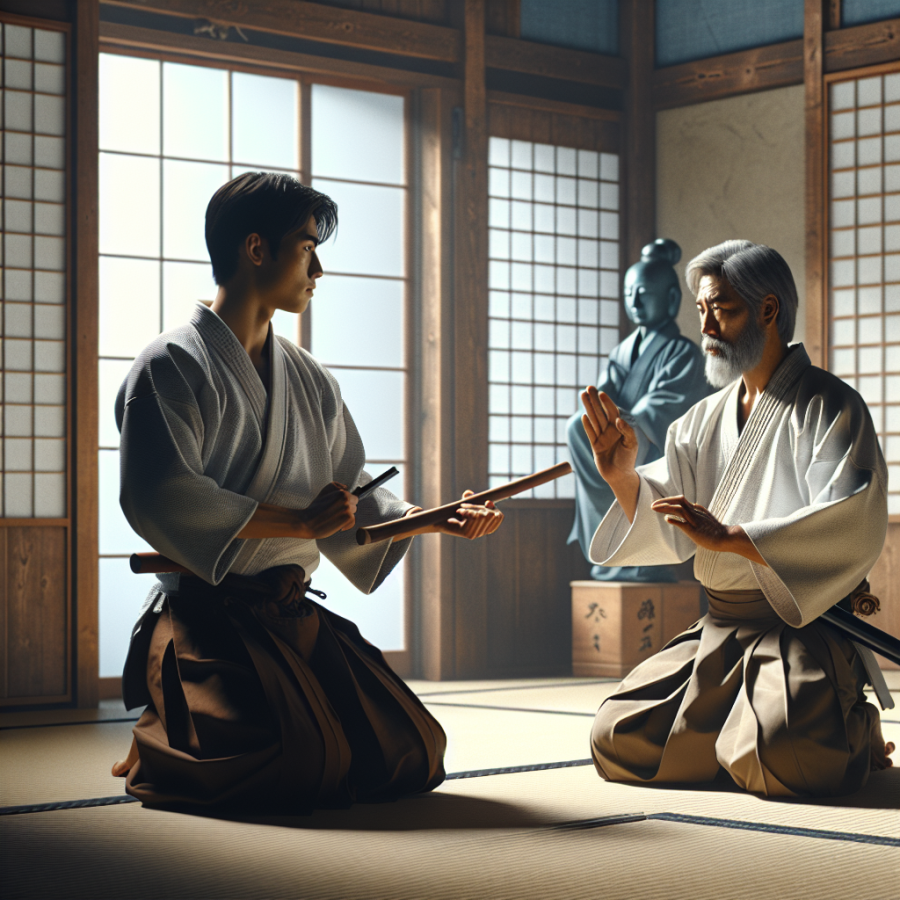Unveiling the Mysteries of Bujinkan: A Journey into the Heart of Ninja Tradition
Bujinkan Ninjutsu, commonly referred to as the art of the ninja, is a martial system that has captivated the imaginations of many and remains shrouded in an aura of mystery. Delving deep into the heart of this ancient practice unveils a world far beyond the popular myths and portrays of stealthy assassins in black garb. Bujinkan is a comprehensive martial discipline that encompasses much more than just combat techniques—it is a way of life that embodies philosophy, strategy, and personal development.
The roots of Bujinkan can be traced back to feudal Japan, where the need for espionage, reconnaissance, and unconventional warfare gave rise to the ninja or shinobi warriors. The teachings and techniques have been carefully preserved and transmitted through generations, with the current grandmaster, Dr. Masaaki Hatsumi, serving as the guardian of this lineage.
At the core of Bujinkan practice are nine distinct schools or 'ryuha,' each with its own unique history, techniques, and tactics. These schools cover a vast array of skills, including not only hand-to-hand combat and weaponry but also survival, camouflage, escape, medicine, and even spiritual development. It is the combination of these disciplines that gives Bujinkan its depth and makes it applicable to both ancient battlegrounds and the modern world.
Training in Bujinkan, students learn to move with agility and fluidity, embodying the natural elements and adapting to their environment. The techniques are not solely about strength; rather, they focus on leverage, timing, and using the opponent's force against them. This approach allows for effective self-defense without the need for brute force and thus can be practiced by individuals of all ages and body types.
One of the fundamental aspects of Bujinkan is the concept of 'Taijutsu,' which translates to 'body skill.' Taijutsu encompasses not just physical movements but also the mental and emotional state of the practitioner. Mastering Taijutsu requires understanding one's own body, recognizing the intentions of an adversary, and harmonizing with the rhythm of life itself.
Weapons training is an integral part of Bujinkan, with a wide range of traditional Japanese weapons such as the katana (sword), bo (staff), and shuriken (throwing stars) being taught.
Read also:
Unleashing Speed: The Thrill of Track Cycling Competitions
The Path to Bujinkan Mastery: Techniques, Training, and the Warrior Spirit
Delving into the refined and enigmatic world of Bujinkan Budo Taijutsu, practicers and enthusiasts embark on a martial journey deeply rooted in Japanese warrior traditions. To attain Bujinkan mastery, one must pave their path with dedication to learning intricate techniques, an unwavering commitment to rigorous training, and the fostering of an indomitable warrior spirit.
At the core of Bujinkan training lies the acquisition of techniques, or 'waza,' which span nine different martial traditions, or 'ryuha.' Each ryuha contributes its unique set of skills and principles, creating a comprehensive combat system. Students begin with the basics, such as Taihenjutsu (body movement and evasion), Dakentaijutsu (striking techniques), and Jutaijutsu (grappling and throwing), progressing towards mastering sophisticated joint locks, submissions, and weapon skills. The variety of traditional weapons includes the sword (katana), staff (bo), and chain (kusari).
Training in Bujinkan is not simply a matter of repeating movements; it requires understanding the principles behind each technique. One such principle is 'Taijutsu,' which emphasizes natural body movement and controlling the space between oneself and the opponent. This principle can only be truly appreciated through persistent practice and hands-on experience with a skilled instructor. Classes often employ a partner-based approach to practice, allowing students to feel the dynamics of combat and refine their skills against non-cooperative opponents.
Another critical aspect of Bujinkan training is the notion of 'Kukan-no-nagare,' or the flow within the void. This concept regards the importance of awareness, timing, and rhythm in engagements. Mastery involves not only moving efficiently but also perceiving openings and exploiting them in a seamless flow, akin to a dance where every step carries strategic importance.
The journey towards mastery also demands an enduring warrior spirit, which sustains the practitioner through challenges and setbacks. This spirit is cultivated by embracing the 'Budo,' or martial way, which transcends physical prowess and delves into character development. In Bujinkan, virtues such as courage, resilience, and benevolence are of equal importance to combat skills. A true Bujinkan practitioner learns to apply the principles of Budo in everyday life, embodying a composed and adaptable mindset, ready to face any adversity with calm and clarity.




